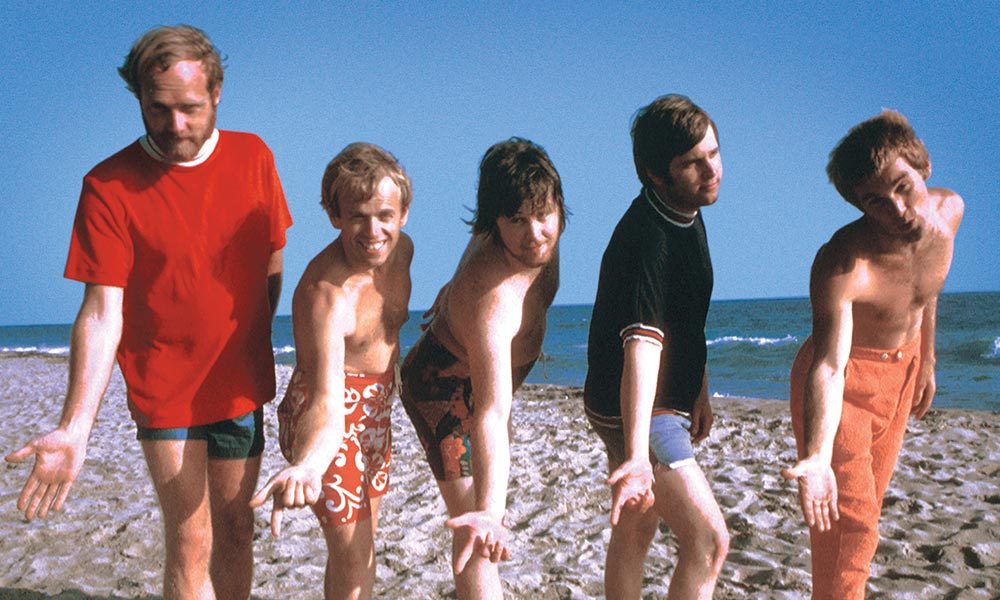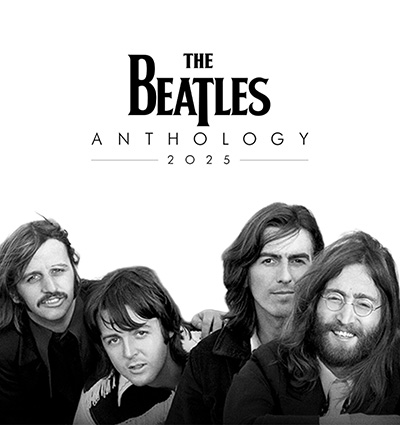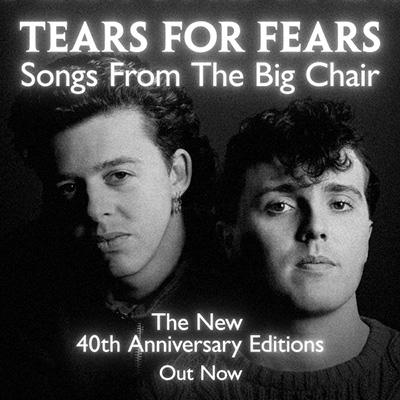You’re So Good To Me: The 10 Best Beach Boys Arrangements
The best Beach Boys arrangements continue to astound with their seemingly endless invention.

There are plenty of ambitious moments in The Beach Boys’ catalogue, and much of that is due to the striking arrangements the group has put together for some of their most famous songs. Here we take a look at ten of the best Beach Boys arrangements.
The Surfer Moon (Surfer Girl, 1962)
Compared to what would come, this doo-wop surf ballad might appear pretty modest, but it featured Brian Wilson’s first string arrangement, so, for this period in The Beach Boys’ work, it’s about as ambitious as things get. It was very unusual for musicians to write and produce their own material back then, so, considering that Wilson had only just turned 21 when “The Surfer Moon” was recorded, it’s pretty staggering.
Beginning with plucked harp, the little-boy-lost melody is underscored by subtly shimmering strings, resulting in an early example of the sweetly wistful, enjoyably sadsack productions that would become Wilson’s trademark.
When I Grow Up (To Be A Man) (The Beach Boys Today!, 1965)
Starting with close harmonies set to a dancing harpsichord line, this song might not have featured lush strings but remains an early example of the best Beach Boys arrangements, indicating the more artful approach to pop-song construction that was starting to preoccupy Brian and the group. Inventive, immensely quotable motifs are played on unusual-for-pop instruments (see the use of that harpsichord and the double-reed harmonica); the percussion isn’t straightforward anymore, it feels carefully integrated into the arrangement; and the harmonies do the job of dragging the listener by the hand as the song hurtles through changes. Not bad for a song preoccupied with premature nostalgia and which is all over in two minutes.
Please Let Me Wonder (The Beach Boys Today!, 1965)
Pet Sounds oughtn’t have been a surprise; the second side of its predecessor, The Beach Boys Today!, is entirely made up of the kind of magnetic, hypersensitive ballads that the group would return to a year later. While the dreamy, Dennis Wilson-sung “In The Back Of My Mind” might be one of the more luxuriously sullen moments of their career, the pick of the … Today! weepies is “Please Let Me Wonder.” It’s a song that appears to deal with the anxieties of impending adulthood, given a thoughtful treatment. Brian’s arrangement is an exercise in restraint and delicacy, each section of the song introducing new elements and sweeping the listener along with it.
Let’s Go Away For A While (Pet Sounds, 1966)
How many other pop instrumentals can you think of that saunter to their conclusion, never once repeating a previous passage, yet which you can sing in your head from start to finish? According to Brian, he’d planned on the song having lyrics but it turned out so well he left it well alone.
The best Beach Boys arrangements from this era were beginning to feature intertwining instrumentation for a full orchestra that required a watchmaker’s eye for detail combined with a maverick, untrained attitude towards convention. Most importantly, “Let’s Go Away…” was so outrageously beautiful it’s no wonder Wilson was reluctant to add to it.
Don’t Talk (Put Your Head On My Shoulder) (Pet Sounds, 1966)
One of the few Beach Boys productions not to feature background vocals, “Don’t Talk…” finds an anguished Wilson at a point where words fail him. After he implores us to, “Listen, listen, listen…” great swathes of slow-moving strings fill the void, making despair sound delectable. A key factor in saving the song from over-sentimentality is Carol Kaye’s bass playing: it’s the level-headed backbone, her witty counter-melodies providing much-needed momentum. Wilson may not have played the bass lines himself, but he did compose them and, especially on Pet Sounds, they became key to the best Beach Boys arrangements.
Cabin Essence (The Smile Sessions; recorded 1966, released 2011)
A song that encapsulates the grand ambition of SMiLE, “Cabin Essence” formed part of the thematic thread concerned with Manifest Destiny and the American migration west to the verdant plains of California.
The music was appropriately expansive: a four-part suite that veered from lilting and bucolic, banjo-driven Americana, to a chaotic waltz driven by crazed cellos, then a trucker’s shift into spooked, baroque-themed territory before ending with rolling psychedelic harmonies set to fuzz bass and bouzouki. All the while, Brian used the kind of innovative techniques – percussion that evokes the picks of railroad workers, syncopated vocal lines – that set the best Beach Boys arrangements apart from anyone else’s.
Good Vibrations (single, 1967)
“Good Vibrations” is a song so brilliant and familiar that it’s easy to forget just how unusual it is. The Beach Boys were operating at their peak after Pet Sounds, and Wilson was afforded the luxury of being able to take a song started at those sessions and to continue working on it until he was satisfied. The version we know and love was effectively a cut’n’paste job – six distinct sections which were the result of 12 recording sessions at four studios. And, improbably, it became one of The Beach Boys’ defining songs; a testimony to their anything-goes ambition at the time.
Listen with fresh ears – the eerie end-of-the-pier organ that underpins the verses seems to have a mind of its own, flitting in and out of earshot; the audacity of a chorus driven along by percussive, sawing cello and a phantasmal Electro-Theremin line; the lonesome cowboy whistle that ushers in the final section – it’s all held together, again, by a walking bassline written for Carol Kaye.
’Til I Die (Surf’s Up, 1971)
Though Brian was taking less of an active role in the band by the early 70s, he was still capable of contributing some stunning moments. “’Til I Die” is nakedly autobiographical, with Brian comparing himself to objects at the mercy of nature and, rather than attempting to change this situation, simply accepting, “These things I’ll be until I die.”
The treatment matched the subject: a gloomily swirling arrangement featuring Moog synthesizer, vibraphone, and organ. Where the best Beach Boys arrangements of the mid-60s were characterized by their intuitive use of space, here Wilson piles on layers of sound, creating an appropriately mournful musical landscape.
Cuddle Up (Carl & The Passions – So Tough, 1972)
In keeping with his other bruised ballads of the time, such as “Barbara” or the still-unreleased “I’ve Got A Friend,” “Cuddle Up” begins as a simple, piano-based Dennis Wilson heartbreaker. But once the chorus kicks in, Dennis surrounds himself with ever-ascending swirls of strings, matching the growing emotional intensity of the song. “Cuddle Up” drifts into a quite beautiful, elegiac instrumental passage before going for the emotional jugular. Along with the likes of “Forever,” from 1970’s Sunflower, it proves that, while he might not have shared Brian’s inventiveness in the studio, Dennis was capable of creating some of the best Beach Boys arrangements of the 70s.
Lady Lynda (LA (Light Album), 1979)
The Beach Boys’ most serious flirtation with classical music came courtesy of guitarist Al Jardine, who repurposed Bach’s Cantata 147 (the source of the hymn “Jesu, Joy Of Man’s Desiring”) as a tribute to his wife. With the help of Dennis, Jardine put together a sweet arrangement with a harpsichord intro. Despite being released at a time when it looked as if the group’s pop past was behind them, the single reached No.6 on the UK chart.
Listen to the best of The Beach Boys on Apple Music and Spotify.















Mrs Judy Stock
June 18, 2019 at 6:10 pm
The Beach Boys are still my favourite music of all time.
Guy M
June 20, 2019 at 10:00 pm
Great to see this selection includes some less well known tracks, with very interesting comments highlighting some of the less obvious subtleties of the arrangements.
Thanks for keeping this music alive!
FletchNZ
June 16, 2020 at 4:51 am
I believe that with ‘Til I Die, Wilson told a friend he was experimenting with chords fingerings on the piano that were symmetrical as laid out. I’m not sure whether that means both hands played mirror images of each other, or whether that mean the notes within the chord.
Paul
June 16, 2020 at 10:41 pm
Interesting collection of some less well known selections from Brian Wilson and the Beach Boys, with some intelligent insightful critique.
David berrington
June 18, 2020 at 4:31 pm
What about sail on sailor from”Holland”
Matthew Dias
June 27, 2020 at 5:05 am
Carol Kaye did not play bass on the final master of Good Vibrations; it was played by Ray Pohlman.
Regarding ‘Til Die, I thought the story was Brian moved his hands around until he heard some cool-sounding chords, and then he wrote the song around them.
Edd Davies
June 17, 2022 at 11:40 am
Correction on the Bach reference: Itis, “Jesu, Joy of Man’s Desiring” not “Jesu, Joy of Man’s Dreaming”.